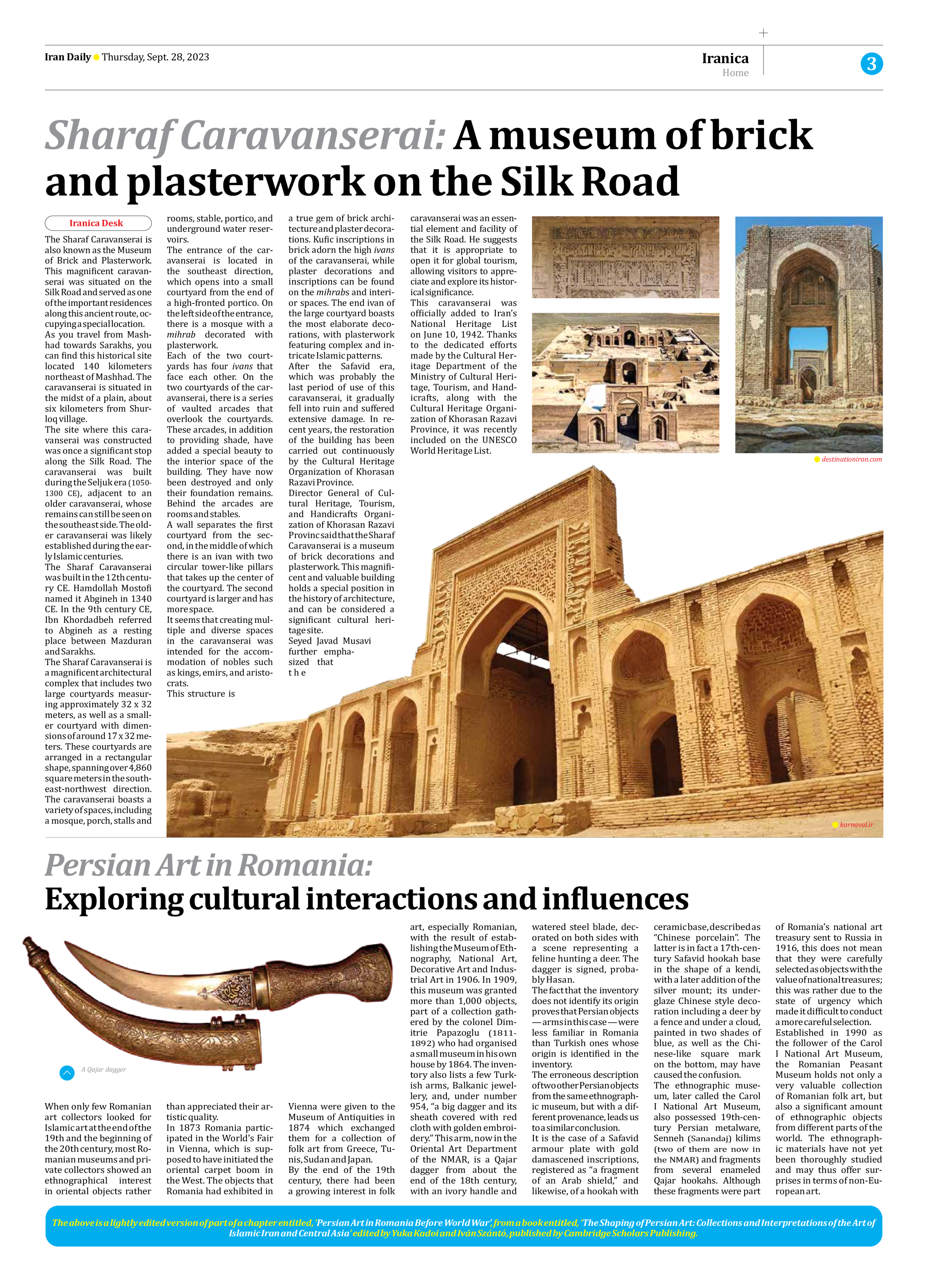
Persian Art in Romania:
Exploring cultural interactions and influences
When only few Romanian art collectors looked for Islamic art at the end of the 19th and the beginning of the 20th century, most Romanian museums and private collectors showed an ethnographical interest in oriental objects rather than appreciated their artistic quality.
In 1873 Romania participated in the World’s Fair in Vienna, which is supposed to have initiated the oriental carpet boom in the West. The objects that Romania had exhibited in Vienna were given to the Museum of Antiquities in 1874 which exchanged them for a collection of folk art from Greece, Tunis, Sudan and Japan.
By the end of the 19th century, there had been a growing interest in folk art, especially Romanian, with the result of establishing the Museum of Ethnography, National Art, Decorative Art and Industrial Art in 1906. In 1909, this museum was granted more than 1,000 objects, part of a collection gathered by the colonel Dimitrie Papazoglu (1811-1892) who had organised a small museum in his own house by 1864. The inventory also lists a few Turkish arms, Balkanic jewellery, and, under number 954, “a big dagger and its sheath covered with red cloth with golden embroidery.” This arm, now in the Oriental Art Department of the NMAR, is a Qajar dagger from about the end of the 18th century, with an ivory handle and watered steel blade, decorated on both sides with a scene representing a feline hunting a deer. The dagger is signed, probably Hasan.
The fact that the inventory does not identify its origin proves that Persian objects — arms in this case — were less familiar in Romania than Turkish ones whose origin is identified in the inventory.
The erroneous description of two other Persian objects from the same ethnographic museum, but with a different provenance, leads us to a similar conclusion.
It is the case of a Safavid armour plate with gold damascened inscriptions, registered as “a fragment of an Arab shield,” and likewise, of a hookah with ceramic base, described as “Chinese porcelain”. The latter is in fact a 17th-century Safavid hookah base in the shape of a kendi, with a later addition of the silver mount; its underglaze Chinese style decoration including a deer by a fence and under a cloud, painted in two shades of blue, as well as the Chinese-like square mark on the bottom, may have caused the confusion.
The ethnographic museum, later called the Carol I National Art Museum, also possessed 19th-century Persian metalware, Senneh (Sanandaj) kilims (two of them are now in the NMAR) and fragments from several enameled Qajar hookahs. Although these fragments were part of Romania’s national art treasury sent to Russia in 1916, this does not mean that they were carefully selected as objects with the value of national treasures; this was rather due to the state of urgency which made it difficult to conduct a more careful selection.
Established in 1990 as the follower of the Carol I National Art Museum, the Romanian Peasant Museum holds not only a very valuable collection of Romanian folk art, but also a significant amount of ethnographic objects from different parts of the world. The ethnographic materials have not yet been thoroughly studied and may thus offer surprises in terms of non-European art.
The above is a lightly edited version of part of a chapter entitled, ‘Persian Art in Romania Before World War’, from a book entitled, ‘The Shaping of Persian Art: Collections and Interpretations of the Art of Islamic Iran and Central Asia’ edited by Yuka Kadoi and Iván Szántó, published by Cambridge Scholars Publishing.







